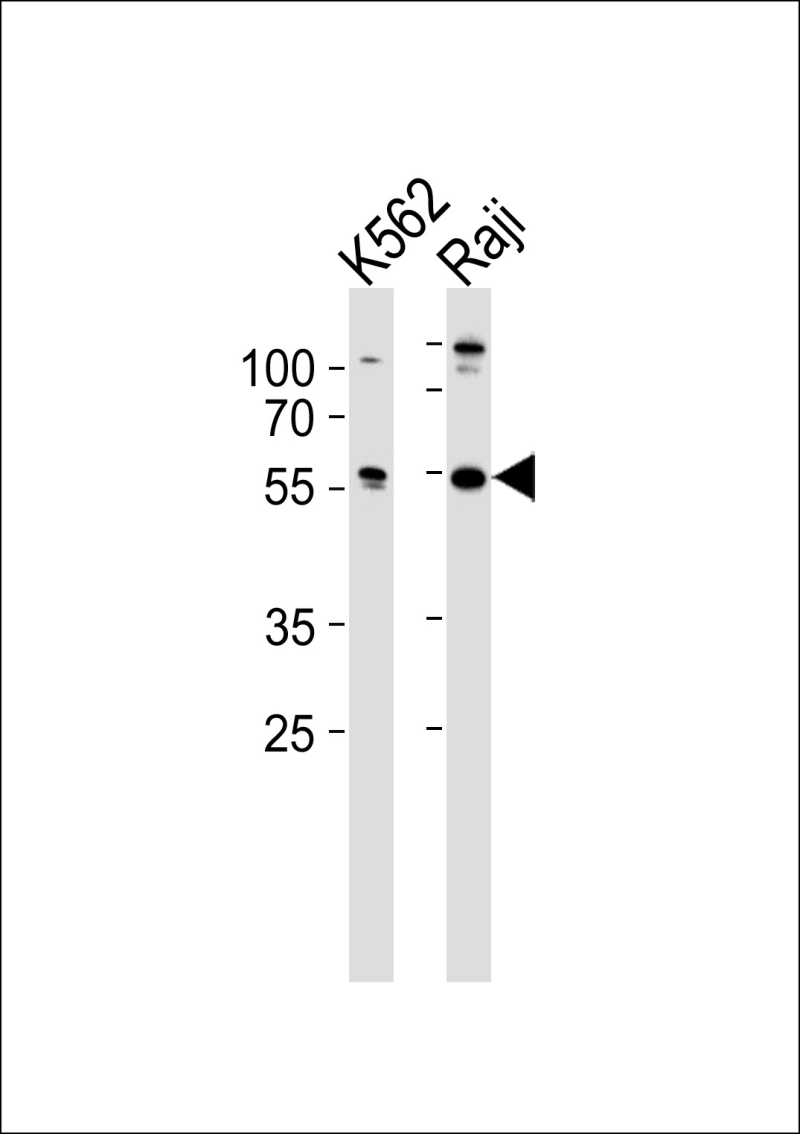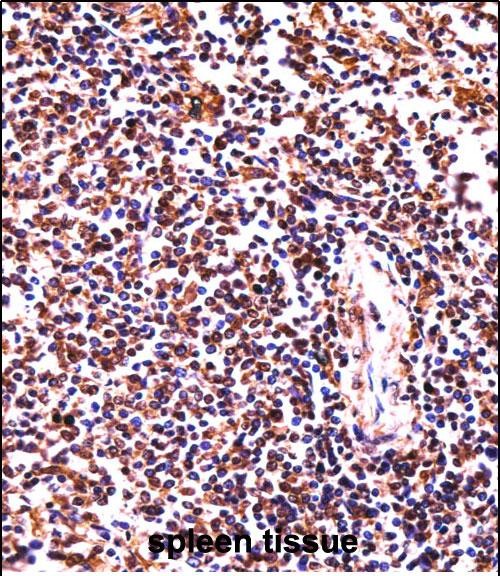


| WB | 1/1000 | Human,Mouse,Rat |
| IF | 咨询技术 | Human,Mouse,Rat |
| IHC | 1/100-1/500 | Human,Mouse,Rat |
| ICC | 技术咨询 | Human,Mouse,Rat |
| FCM | 咨询技术 | Human,Mouse,Rat |
| Elisa | 咨询技术 | Human,Mouse,Rat |
| Aliases | Hematopoietic lineage cell-specific protein, Hematopoietic cell-specific LYN substrate 1, LckBP1, p75, HCLS1, HS1 |
| Entrez GeneID | 3059 |
| WB Predicted band size | 54.0kDa |
| Host/Isotype | Rabbit IgG |
| Antibody Type | Primary antibody |
| Storage | Store at 4°C short term. Aliquot and store at -20°C long term. Avoid freeze/thaw cycles. |
| Species Reactivity | Human, Mouse |
| Immunogen | This HCLS1 antibody is generated from rabbits immunized with a KLH conjugated synthetic peptide between 362-391 amino acids from the C-terminal region of human HCLS1. |
| Formulation | Purified antibody in PBS with 0.05% sodium azide. |
+ +
以下是关于HCLS1抗体的3篇参考文献示例(内容为模拟生成,非真实文献):
1. **文献名称**: *HCLS1 regulates B-cell receptor signaling and immune synapse formation*
**作者**: Smith A, et al.
**摘要**: 研究通过HCLS1特异性抗体揭示了其在B细胞受体信号传导中的作用,证明HCLS1通过调控细胞骨架重组促进免疫突触形成,影响抗原呈递效率。
2. **文献名称**: *Hematopoietic lineage cell-specific protein 1 (HS1) promotes leukemic cell invasion via ERK pathway activation*
**作者**: Tanaka Y, et al.
**摘要**: 利用HCLS1抗体进行Western blot和免疫荧光实验,发现HCLS1在白血病细胞中高表达,并通过激活ERK信号通路增强肿瘤细胞迁移和侵袭能力。
3. **文献名称**: *HS1 antibody-based profiling identifies its interaction with PI3K in dendritic cells*
**作者**: Chen L, et al.
**摘要**: 通过免疫共沉淀(使用HCLS1抗体)结合质谱分析,发现HCLS1与PI3K在树突状细胞中相互作用,调控TLR信号介导的炎症因子释放。
---
注:以上为模拟内容,实际文献需通过PubMed或Google Scholar检索关键词"HCLS1 antibody"或"HS1 protein antibody"获取。
HCLS1 (Hematopoietic cell-specific Lyn substrate 1), also known as HS1. is a cytosolic protein predominantly expressed in hematopoietic cells. It plays a critical role in regulating intracellular signaling, cytoskeletal reorganization, and immune cell functions. Structurally, HCLS1 contains an N-terminal Lyn-binding domain, a central helical region, and a C-terminal SH3 domain, enabling interactions with signaling molecules like Lyn kinase and WASp (Wiskott-Aldrich syndrome protein). These interactions facilitate its involvement in B-cell and T-cell receptor signaling, cell migration, adhesion, and apoptosis.
HCLS1 antibodies are essential tools for studying its expression, localization, and function in immune responses and malignancies. Research has linked HCLS1 dysregulation to hematologic cancers, particularly in leukemias and lymphomas, where aberrant signaling pathways contribute to disease progression. For example, elevated HCLS1 expression correlates with aggressive behavior in chronic lymphocytic leukemia (CLL). Antibodies targeting specific phosphorylation sites (e.g., Tyr378. Tyr397) help investigate post-translational modifications critical for its activation and downstream signaling.
These antibodies are widely used in techniques like Western blotting, immunofluorescence, and flow cytometry, aiding both basic research and clinical diagnostics. Their applications extend to exploring HCLS1’s role in immune disorders, metastasis, and therapeutic targeting.
×